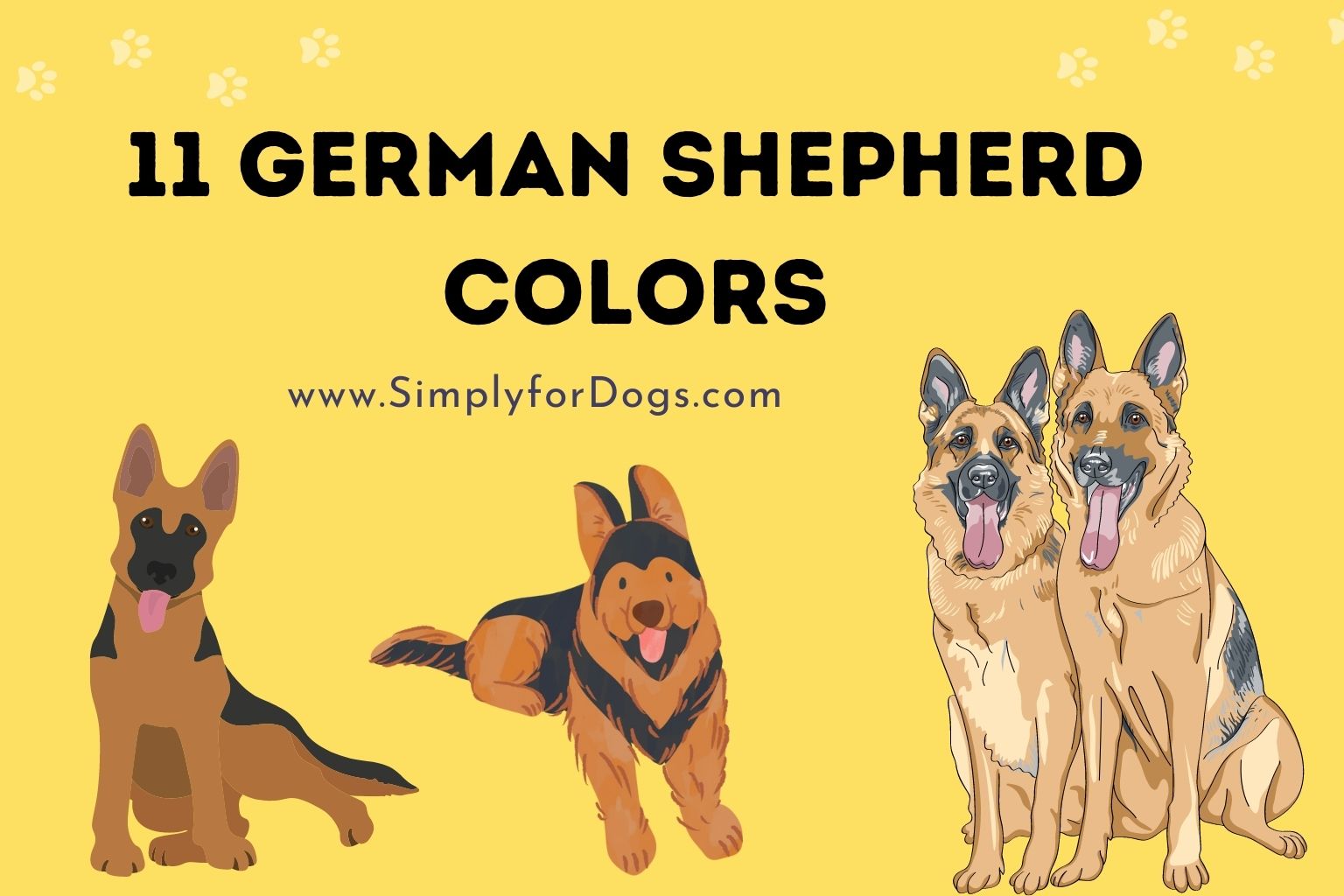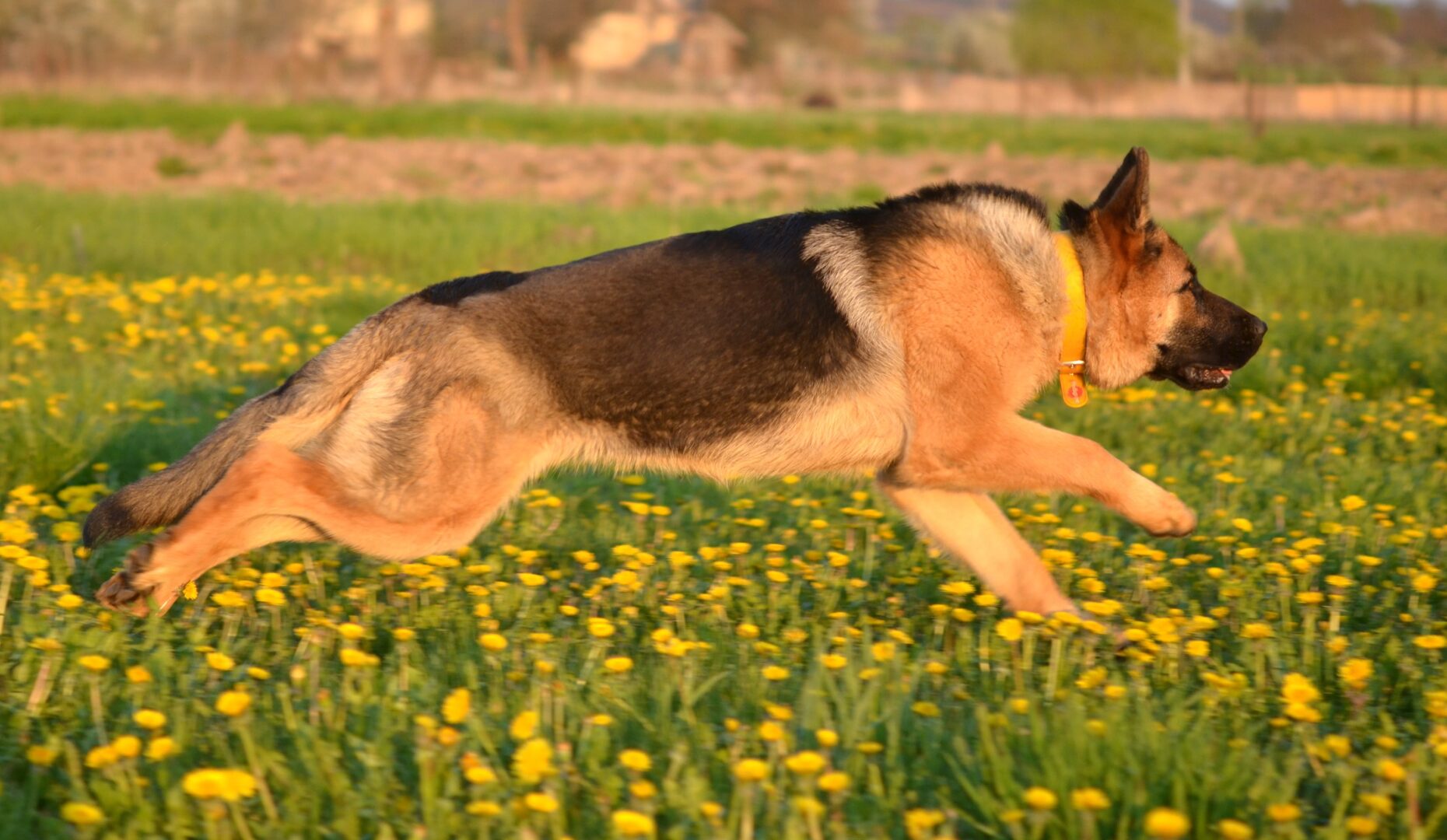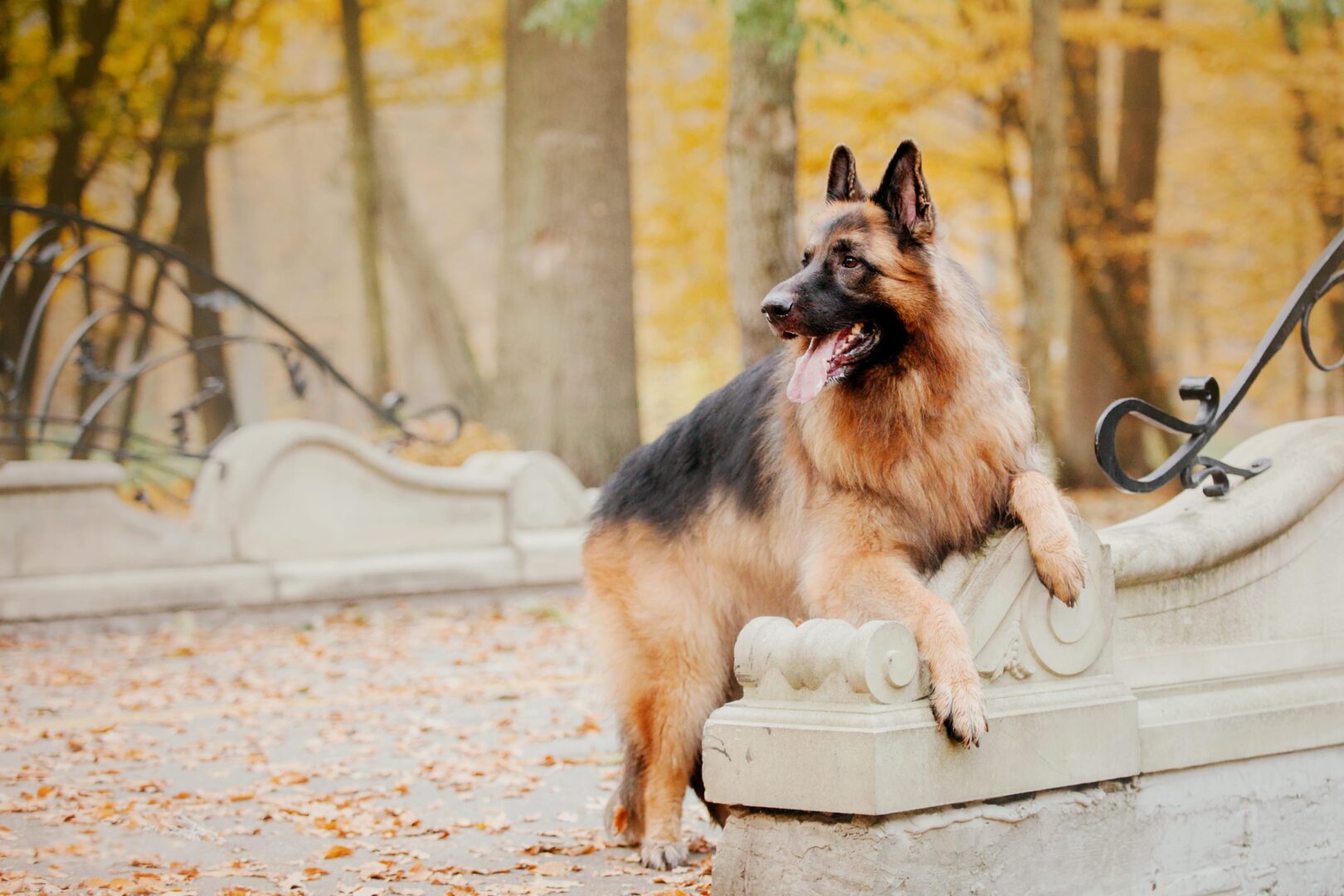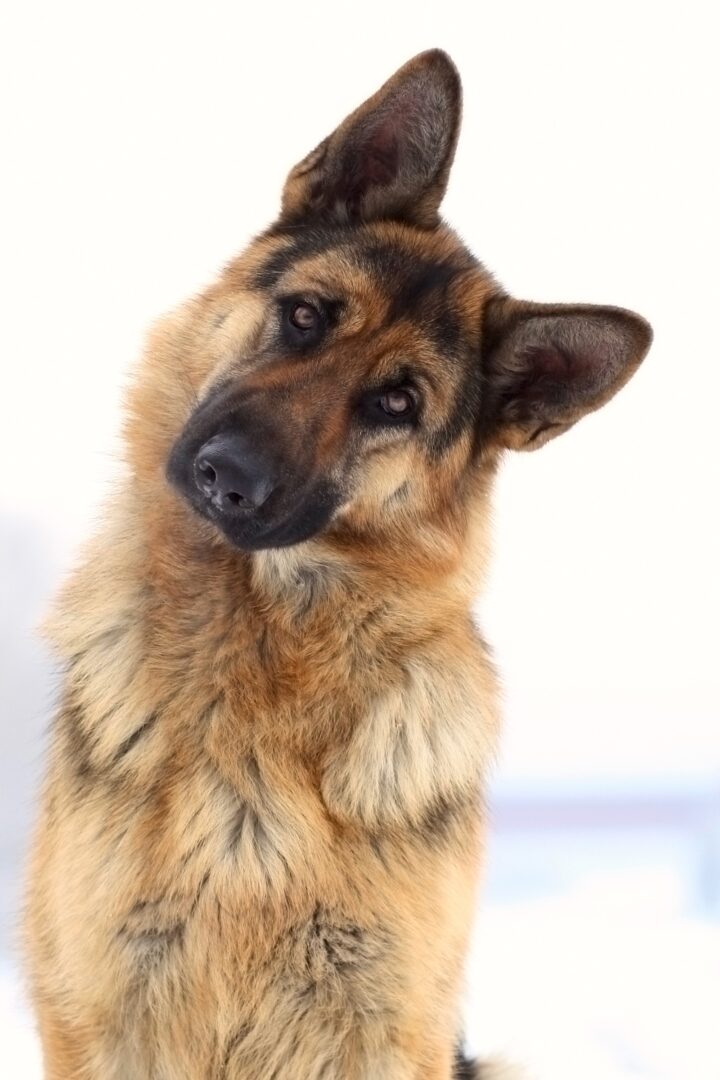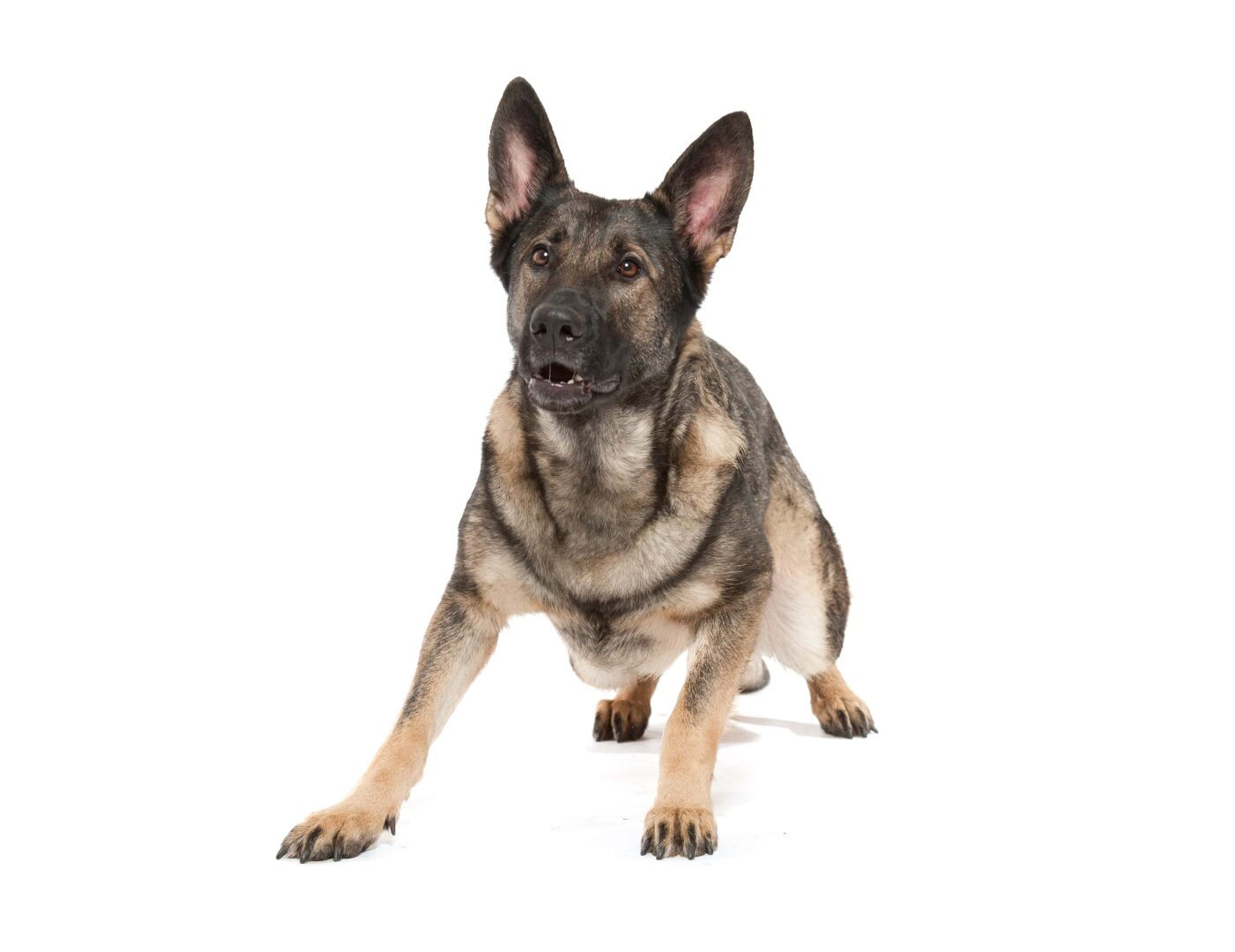Known for its loyalty and intelligence, the German Shepherd dog or GSD is one of the most popular herding breeds. It’s considered to be an all-purpose worker and is currently bred as a fun family dog and man’s best friend.
This dog has a strong muscular body and is easily trained, but you should always provide it with something fun to do; otherwise, it will easily get bored. An average male weighs between 75 and 95 pounds, while females are typically lighter with weights ranging between 50 and 75 pounds. They can live between 9 and 13 years.
A GSD has a medium-length coat that comes in various colors. In this article, we will highlight the most popular German shepherd colors, in addition to some interesting facts about this intelligent breed.
German Shepherd Colors
Just like lots of other breeds, the coats of German Shepherd dogs come in various shades and patterns. Here are the 11 official colors.
- Black and tan.
- Black and red.
- Black and cream.
- Black and silver.
Some colors aren’t that popular and can be considered as faults by major kennel clubs. The most common colors are solid black, tan, sable, black and tan, black and silver, black and cream, and black and red. The coats can be short and thick or a little bit furry around the chest, ears, and the back of the legs.
Rare colors are still accepted by some kennel clubs and the dogs are considered purebreds, even though they’re less desirable. These include gray, liver, and light blue. Some other rare colors aren’t accepted. These include spotted white and black, panda pattern, solid blue, pure white and fawn color.
History of German Shepherd Colors
The first GSDs weren’t intended to be show dogs. They were strong and muscular and made great guard and work dogs. This means that the main focus was on the physical traits and intelligence of the dog and not its coat color. This is why the original coat colors ranged from very dark to almost white color.
Nevertheless, some dog breeders wrongfully associated a lighter or softer color with a weaker dog. As a result, an all-white German Shepherd was considered less suitable for the working environment as it was considered to be unhealthy.
Modern scientific research proved that this theory is wrong. Still, all-white breeds are disqualified from being considered as purebreds by the American Kennel Club or AKC. However, the United Kennel Club in the UK or UKC allows pale coated and white German Shepherds to take part in shows.
The original German Shepherd has genes for dark as well as light coat colors. Nevertheless, sable is currently the most common color. The interesting thing about German Shepherds is that each hair has multiple colors and this means that no two dogs will ever look identical even if they have the same coat color.
German Shepherd Color Changes
Almost all German Shepherd puppies are born with a coat that looks nothing like their adult coat. As the puppies grow, they’re going to grow new hair and the color will change at the mark of 6 months, 18 months, and finally when the puppy is two years old.
Sable German Shepherd puppies change colors as they grow older. They will probably reach their final adult color when the dog is almost 3 years old. Black and tan puppies are usually born with pure black coats. They will start shedding the baby hair when the puppy is 6 months old, and the tan color will start to pop out.
However, some black and sable dogs are born with a lighter coat. As the dog grows, it will start to grow more black hair, darkening the overall color of the coat.
Related Content:
Breed of the Week: The German Shepherd
15 Interesting Facts About German Shepherds (Video)
A Look at the German Shepherd Lab Mix
The Most Common 11 German Shepherd Colors
These are the most common color variations as listed by the AKC or the American Kennel Club.
1. Black
A black German Shepherd puppy could be born to two black parents or a black and tan parent. This color is quite expensive because it’s rather rare. However, it’s still recognized by the AKC as a purebred. Black German Shepherds have the same origins as other color variations, they just happen to be less common.

Some Miniature Black German Shepherds are crossbred. These aren’t considered to be pure as they’re usually the result of the mating between a German Shepherd and a Collie or a Poodle. With crossbreeds, it’s difficult to know how your dog will turn out to be in terms of size, health, and character.
2. Bicolor
Dogs of this color are called bicolor although their coats are solid blacks. They will either have brown or tan around their feet and legs. Bicolor dogs might also have a little brown or tan on their faces and eyebrows. Still, the main color of their coats is black.
3. Sable
Sable is the dominant color in German Shepherds and it comes straight from their wolf ancestors. Very few breeds still carry the gene for the two-toned hair the same way German Shepherds do. Each hair has a black tip, while the rest of the hair can be gray, tan, red or golden. The color of the coat depends on the percentage of black color in each hair. This is why no sable dogs will ever look identical.
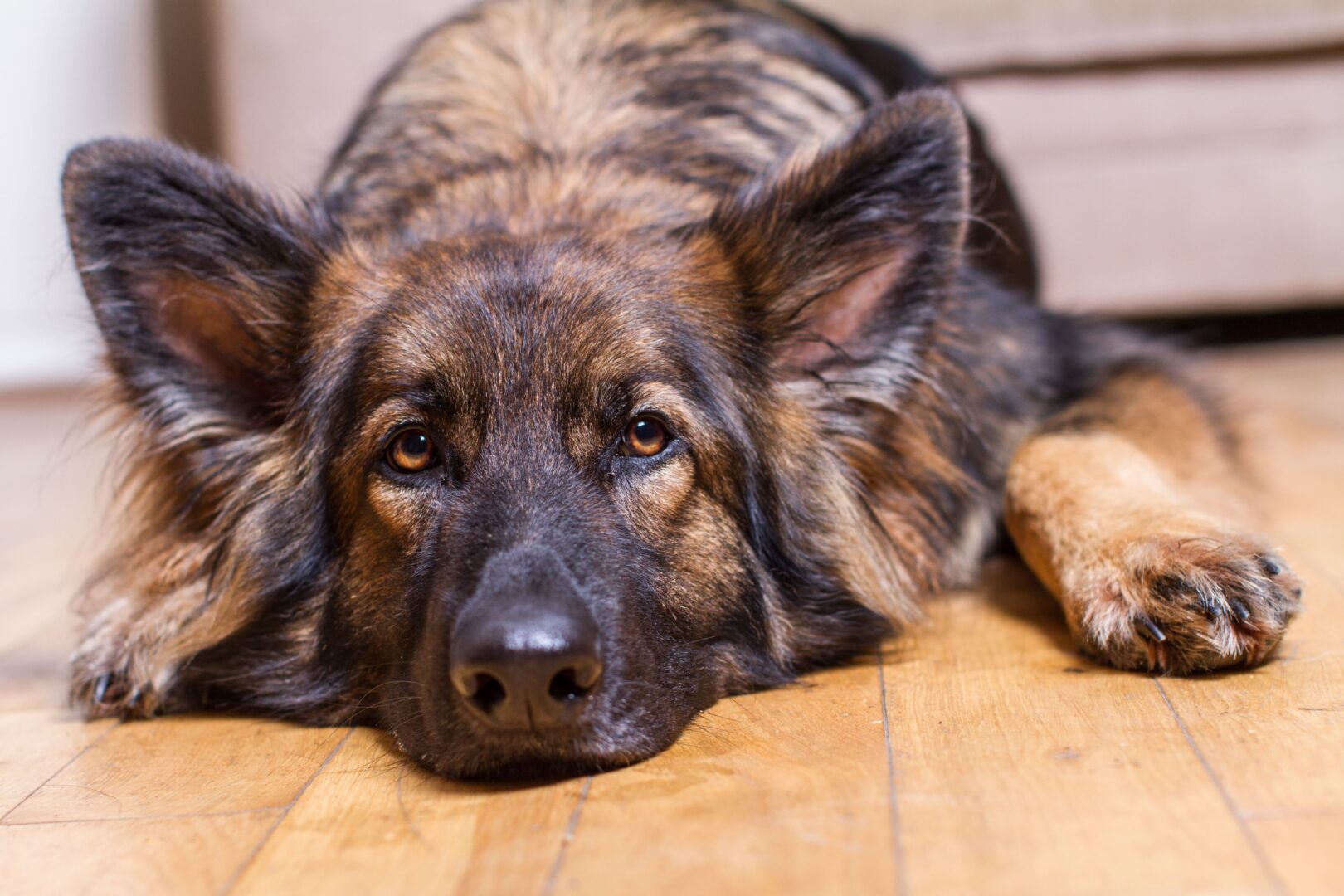
Although there are studies that link the color of dogs to their overall health and behavior, these studies shouldn’t be applied to every breed. Therefore, there’s no evidence to prove that Sable German Shepherds are different from their black or tan counterparts.
4. Black and Tan
This is probably the color that pops into your head whenever you think about GSDs. Black and tan patterns might look close to sable patterns, especially to the untrained eye. If the puppy is young, it’s quite easy to get confused as it keeps on shedding its hair. However, things change as the puppy grows into adulthood within 2 to 3 years.
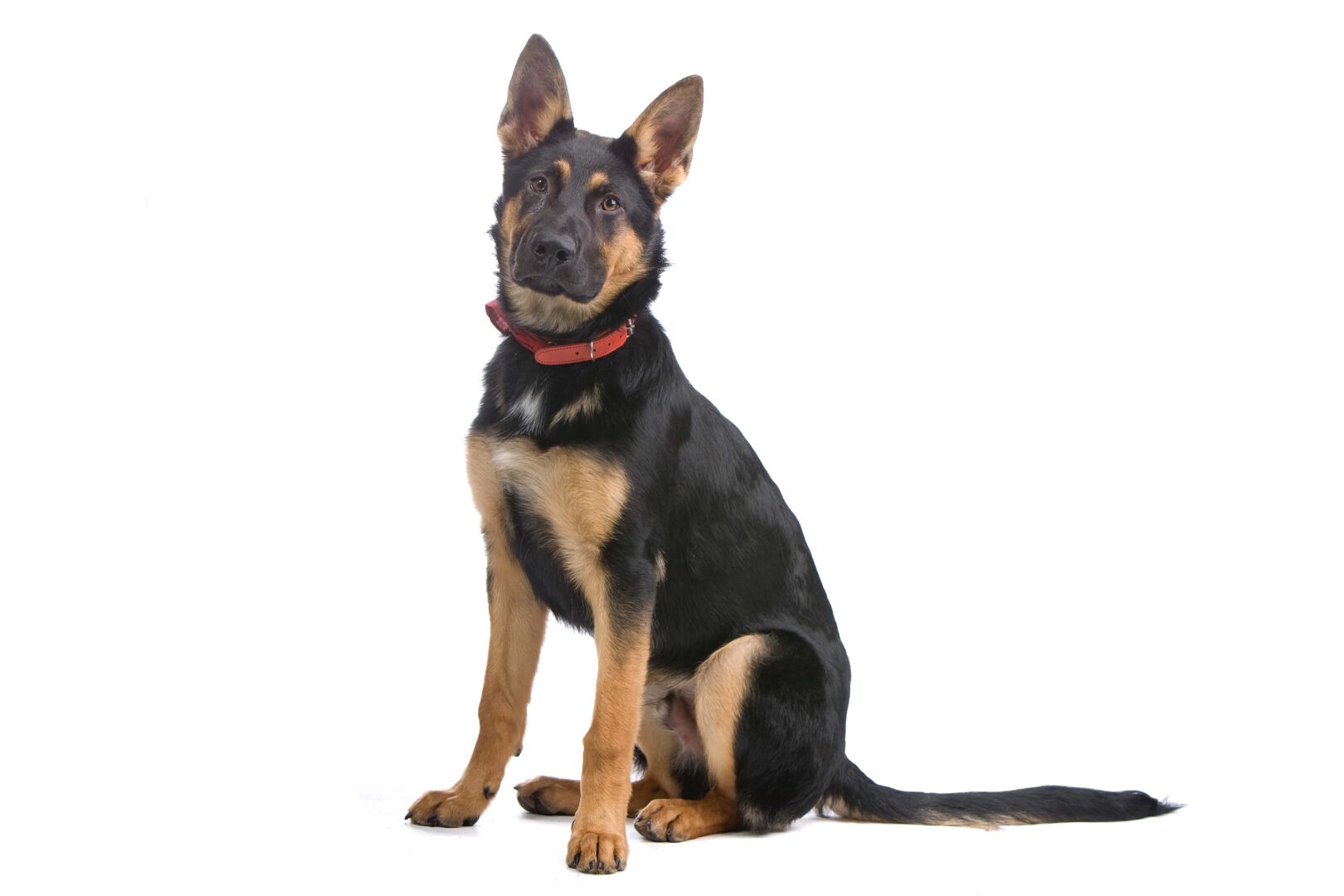
Most dogs have a black back or saddle that stretches to the tail. The hair gets lighter in the chest, neck, legs, and belly. In some cases, the German Shepherd will have a black mask that covers the face.
5. Black and Red
Just like the black and tan pattern, these dogs will have darker backs and lighter underbellies. The red part is more of strawberry blonde. This color is very popular among dogs in the show line. There’s another rarer variation of this color combo.
6. Black and Cream
Having cream or white hair is a result of recessive genes, just like humans who have blonde hair. Lighter colors of German Shepherds aren’t always allowed to take part in shows, but they can still participate in obedience competitions.
7. Black and Silver
If you’re thinking about owning an unusual color of German Shepherds, then you might think about buying a silver puppy. The silver color is a result of recessive genes and is more common in working dogs than show dogs.
This color variation is quite difficult to determine when the puppy is still young. As your dog grows, it will start to shed its baby coat, growing a new coat which might be a lot lighter or darker.
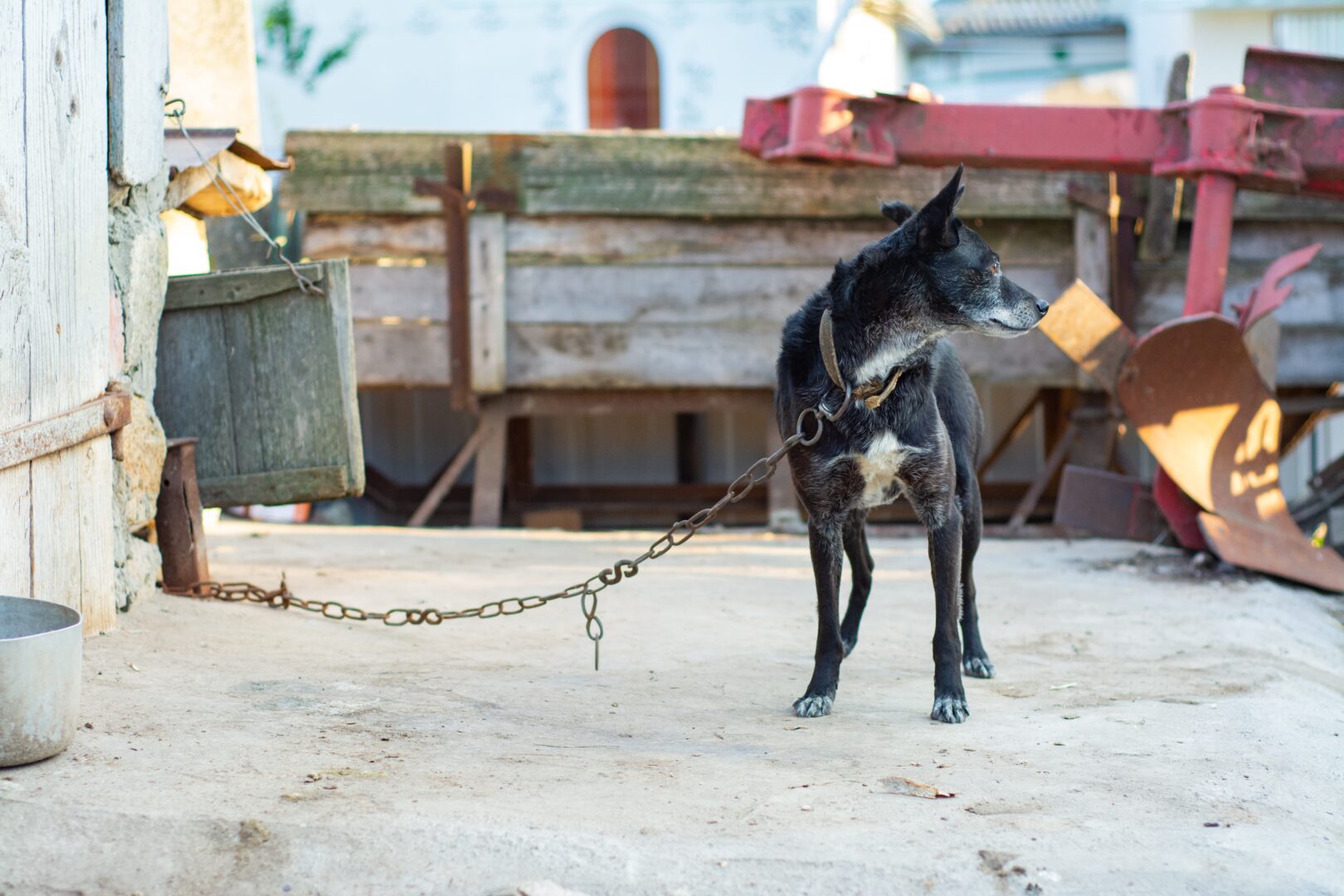
Most silver and black dogs are born as black puppies. As they grow older, the silver patches start to appear and become more prominent. Most of the time, this color pattern will follow the same black saddle pattern found in other GSDs. Having a lighter or less common color doesn’t have a direct impact on the health or temperament of your dog.
8. Blue
From time to time, you’re likely to come across a blue German Shepherd. The puppies might cost five times as much as traditional black and tan variations.
Blue German Shepherds have hair that has a hint of blue or gray and might also have blue eyes. They come in three different variations; blue and tan, blue and sable or blue and black. The color of the dog’s coat is determined by two genes; one that determines the color and another one that determines the pattern.
Some blue colored dogs will have brown or amber eyes. Light blue dogs aren’t disqualified from competitions but they’re considered as serious faults.
9. Gray
Gray German Shepherds are also rare. The puppies are either pure silver-gray or have some darker markings. They might not be that popular as show dogs, but lots of people prefer to buy a distinctive puppy that has an unusual coat.
10. Liver
Liver German Shepherds are considered faults just like the blue ones. Their coat color is a result of a recessive gene that blocks the black pigment from forming. Blue and gray coats might have some black hair, but liver coats are black-free.
Liver dogs are AKC recognized but they’re considered as serious faults. As a result, breeders won’t breed for this color variation in particular. The nose, eyebrows, lips, and footpads won’t have any shades of black, but rather shades of dark brown. Puppies might have blue or green eyes that turn to amber with a reddish hue at the age of 6 months.
These dogs come in two color variations; chocolate which is dark brown and cinnamon which is reddish-brown. There’s another rare version of the liver color which is called the Isabella color or Diluted Liver. It has two copies of the Blue gene and two copies of the Liver gene.
The Liver genes block all the black pigmentation and it appears brown. The Blue genes then dilute the brown color. The Isabella color is common in other breeds like Dobermans, Chihuahuas, and Collies.
11. White
Although many people believe that White German Shepherds are seen as a genetic flaw, the color was intended as breeders were trying to breed a white German Shepherd.
A white GSD is not an albino that would have pink eyes. It typically has golden eyes and a brown or black nose. The coat is usually longer than most typical colors and the dogs are likely to shed more hair. They’re gentle by nature and make great family dogs.
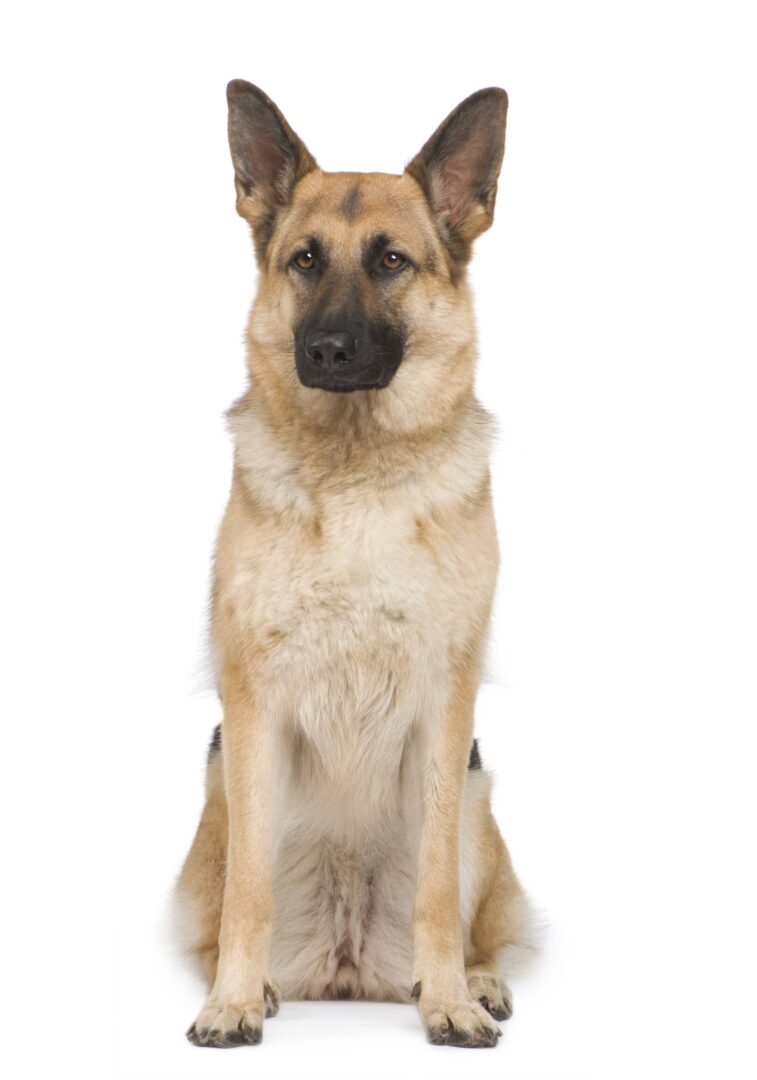
German Shepherds usually have strong personalities and are pretty dominant. However, the white ones are usually shy or skittish. They can still be watch dogs if they’re trained right.
White German Shepherds excel in performance events but they aren’t appreciated in dog shows organized by the AKC. In the UKC they’re offered a separate registration.
Taking Care of Your German Shepherd
German shepherds need regular exercises because they’re very active. They require continuous physical and mental activities that keep them motivated. These dogs love to play and bark all the time, so they need a loving family or an owner who will take the time to give them the needed attention and affection. Here are some tips to help you take care of your GSD.
- These are active dogs and need to be fed regularly. Their food should be full of nutritious content to give them the needed energy. Make sure that you’re feeding your GSD age-appropriate food to keep it healthy.
- Bloating is a life-threatening condition that can happen if you don’t feed your dog right. Divide the food into two or more meals and avoid exercising the dog right after meals. Give it time to rest to avoid the risk of bloating.
- Make sure that your dog has access to clean water all day long to avoid dehydration. Your dog should drink small amounts throughout the day, instead of drinking a large amount at one time.
- Brush your dog’s coat once or twice per week. A bath should be given only when you feel like your dog needs it.
- They’re amazing family members and can be trained easily. So if you want them to watch and guard your family, you’ll just have to spend time training them.
- Socializing your dog at a very young age guarantees that you’ll have a stable protector. Expose your German Shepherd puppy to various people, places and other dogs when they’re very young. Even if you plan to have your GSD as a guard dog, it needs proper socialization.
-
- Use positive manner while teaching your dog tricks. Give your dog love and attention even if it doesn’t comply with all orders successfully. This will help improve the dog’s attitude.
Related Content:
Breed of the Week: The German Shepherd
15 Interesting Facts About German Shepherds (Video)
A Look at the German Shepherd Lab Mix
Wrap Up
As you can see, there are different color varieties of German Shepherds. All of them are beautiful and unique. Some colors might not be accepted by big kennel clubs for show purposes but the dogs would still make amazing guard, military, police, and watchdogs. They’re so caring so they make great family friends, rescue and guide dogs, regardless of the color of their coats.

